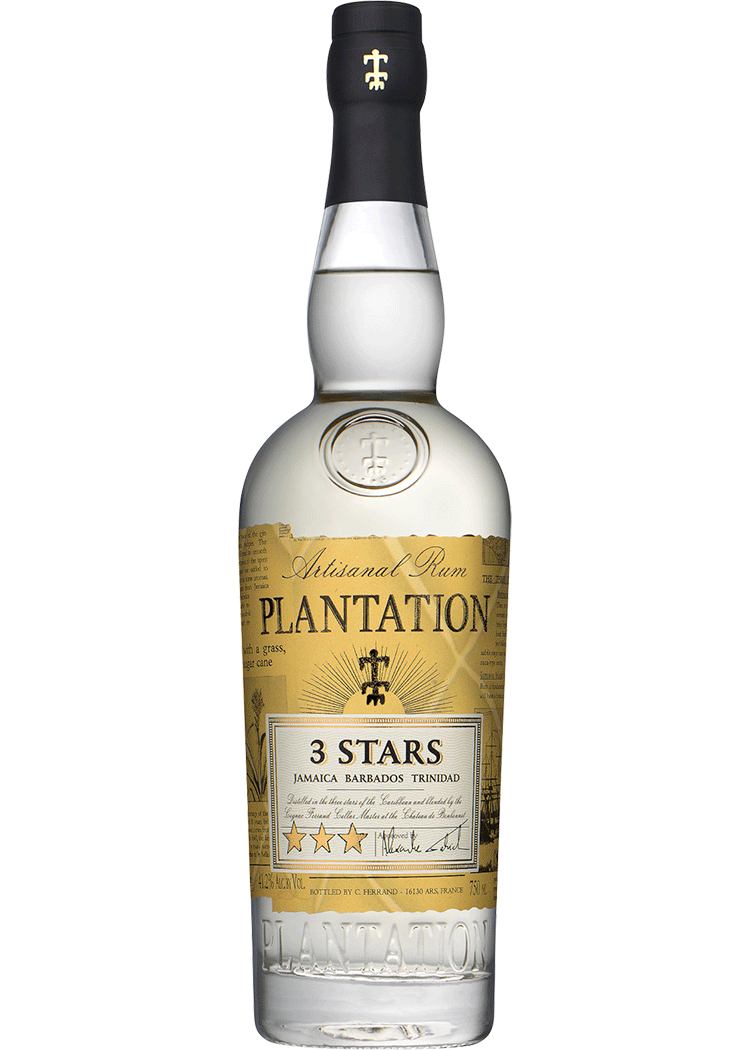tap to enlarge
Plantation 3 Stars Artisanal Rum
750ml
$21.99
+CRV
*Price, vintage and availability may vary by store.
*Price, vintage and availability may vary by store.
Product Highlights
France - Keenly vibrant and well-balanced, displaying the finesse and style of Trinidad & Barbados integrated w/ the fuller flavors of Jamaica. It has delicate notes of tropical fruits intertwined w/ brown sugar & banana. Ultimate Spirits Challenge 2023 Finalist, Great Value 95pts
Product Details
OVERVIEW
Producer Story
Cognac, France, the world’s premier brandy region, is some 80 miles north of Bordeaux. Not surprisingly, the region was first a wine-producing area. In the mid-1500s, however, Cognac merchants began to distill some of their wines, making them more stable for transport to export markets in the Netherlands, Britain and Ireland. Demand and reputation quickly followed, and in the following decades the Cognac area mostly dispensed with winemaking, to specialize in spirits.
Cognac’s six appellations, or Crus, circle the city of Cognac. Their soils range from light chalk to clay, with the most desirable regions containing the most chalk, which provides superior drainage. The two most prestigious Crus are Grand Champagne and Petite Champagne. (Don’t confuse these with the famous French sparkling wine region located more than 200 miles northeast!) Cognacs made with a blend from these two areas – with at least 50 percent from Grand Champagne – may carry the label “Fine Champagne.”
Borderies, the smallest region, lies north of Grand Champagne. Surrounding these three regions is Fins Bois, whose soils vary between clay and chalk. Bon Bois, which surrounds Fins Bois, has mostly clay soil. The sixth production area, Bois Ordinaires, is a large region of light, sandy soils along the Atlantic coast.
The Champagne cognacs are typically elegant, with flowery aromas; cognacs from the outer appellations have more fruit-forward scents.
The chief grape used to make cognac is Ugni Blanc, an acidic white grape that produces a low-alcohol wine well-suited for distillation. Wines made from other grapes, such as Folle Blanche and Colombard, may also be distilled in the mix.
The wine is distilled twice in a Charentais pot still. Some producers will distill the wine with its lees, the dead yeast deposits remaining from fermentation. This process produces a full-bodied spirit that develops rich dried fruit and nut qualities during barrel maturation. Other producers may remove the lees to make a faster-maturing, lighter spirit. Although the final product may be as much as 72 percent alcohol by volume, producers usually distill it closer to 60 percent ABV.
The distillate comes out of the still as a clear, colorless eau-de-vie. It’s aged in small (350-400 liter) oak barrels for six months to a year, and begins to take on flavors and color from the oak. Producers then move the Cognac to older barrels to continue aging. During aging, evaporation reduces the alcohol level of the distillate, which will be further reduced to around 40 percent for bottling. How long the Cognac ages and the producer’s final blend of barrels determines the “house style” that’s consistent year after year.
Category
Rum, distilled from sugar cane or its byproducts, is synonymous with the island life. Sugar cane and rum production spread throughout the Caribbean after 1493, when Christopher Columbus brought sugar cane cuttings to the region. The plant was quick to flourish in the heat and humidity of the Caribbean region.
By the 1600s, island-made rums were in demand in England and its colonies. Part of the drink’s popularity is attributed to the Royal Navy, which gave its sailors daily rations of rum. That tradition lasted more than 300 years, until 1970.
